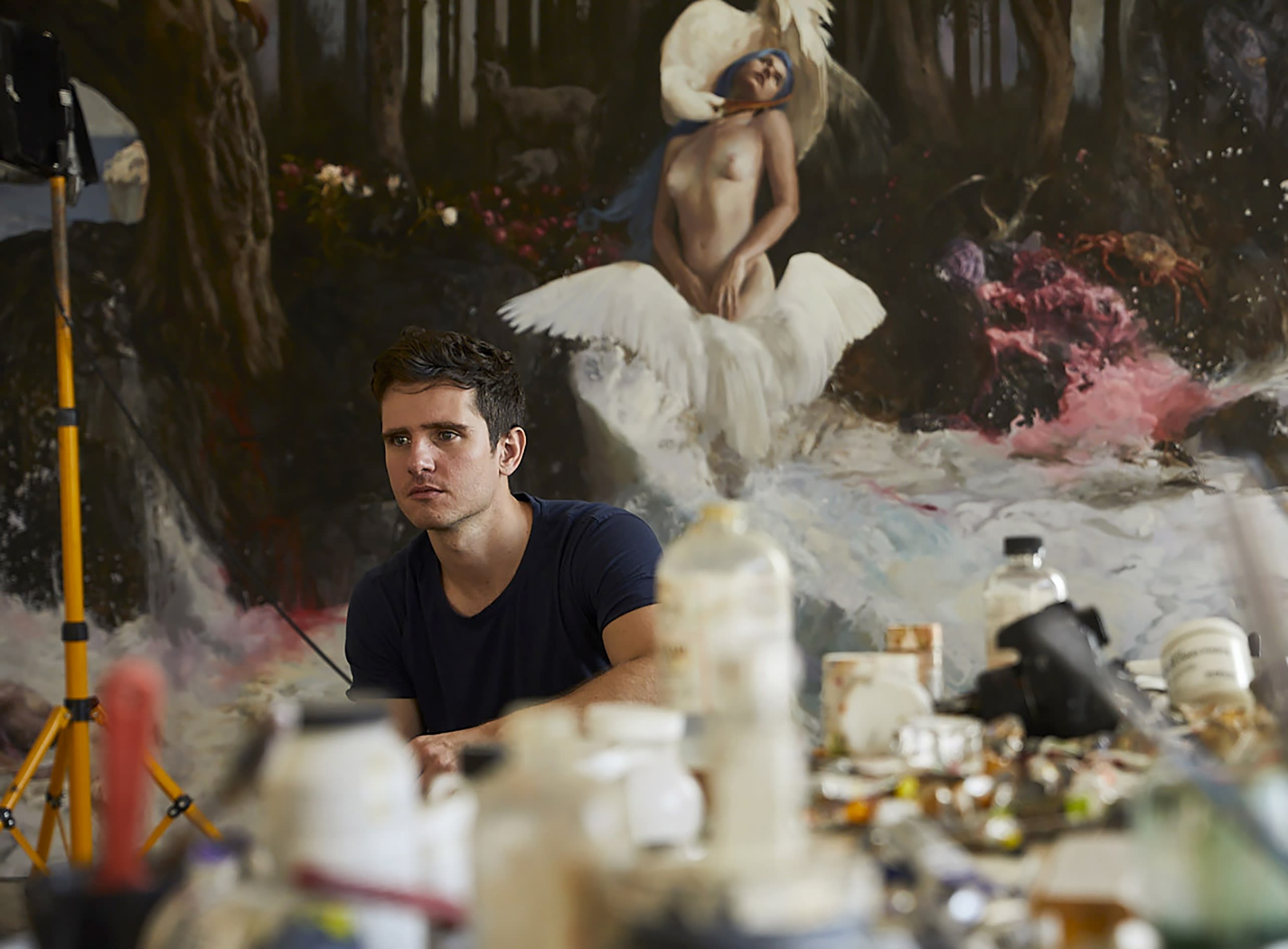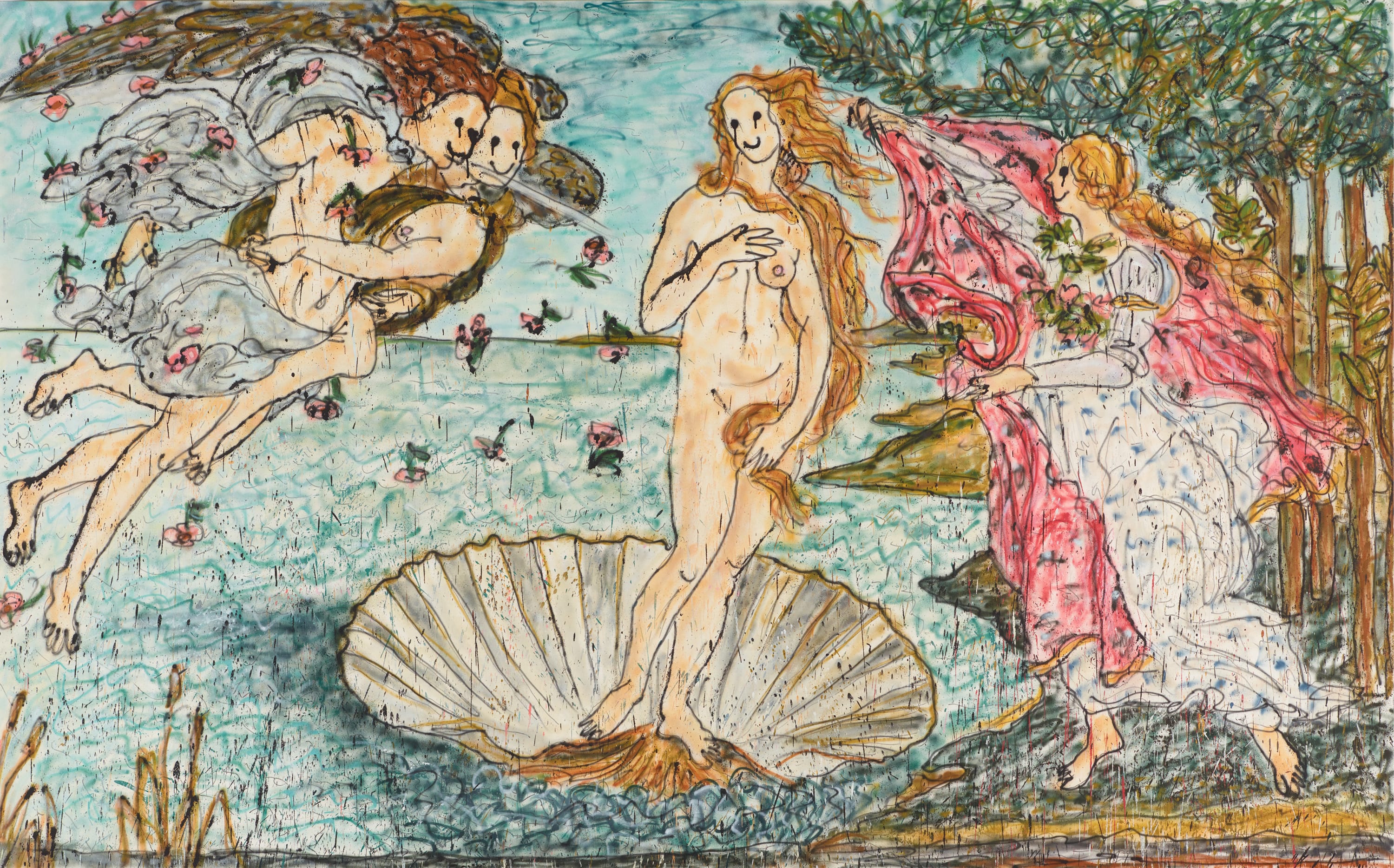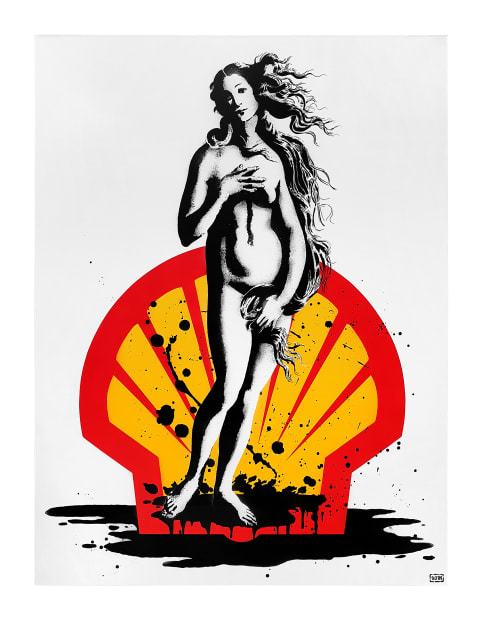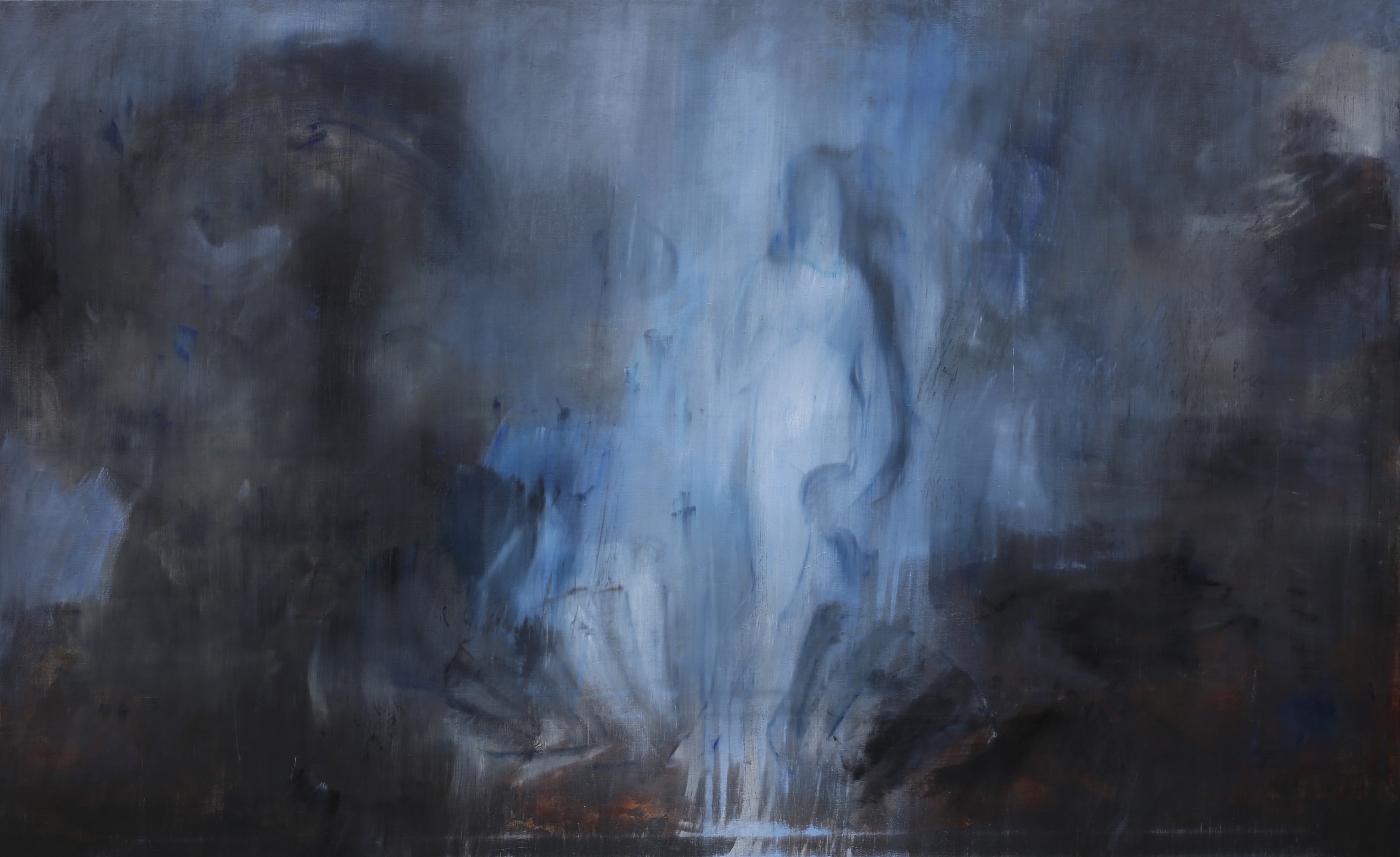-
(RE)BIRTH OF VENUS
RENAISSANCE PAINTING 2.0 -
Beautiful blonde waves, a gracile nude female figure and a mythical scallop shell - In the mid 1480s, the Italian artist Sandro Botticelli changed the art world with his tempera masterpiece The Birth of Venus. His Italian Renaissance artwork set new standards for fine art and inspired artists all over the world in the centuries that followed.
Almost 540 years later, in (Re)Birth of Venus - Renaissance Painting 2.0 some of todays most talked about contemporary artists take a deeper look at Botticelli's masterpiece and reinterpret the mythical moment of the goddess’ arrival on land after her birth. As part of a Renaissance revival in this day and age, painting, sculpture, craftmanship and street art merge together in this show.
-
Sophie Vallance
[H]aving moved around a fair bit in the past few years, I’m now coming to realise that painting people I know well is a way to keep them close.
– Sophie Vallance, 2021
-
-
I think that my navigation of my own state of being is like an ebb and flow, that moves and changes, and I think of my practice as an artist in exactly the same way. Often looking back at paintings I made some time ago, I can see them clearer than the time in which I made them, it’s amazing how charged with meaning or feeling they can be, that I wasn’t even aware of before, and how they make sense only in retrospect. Always moving forward within the practise is vital for me, I would rather not make art at all than make repetitive or formulaic work, that isn’t searching for growth.
– Sophie Vallance, 2018
-
MADSAKI
I'm not interested in painting nice and beautiful. To me, ugly is beautiful.
- Madsaki, 2018
-

Madsaki
Birth of Venus II, 2018Acrylic paint, aerosol on canvas
67 7/8 x 109 5/8 in
172.5 x 278.5 cm -
The smiley faces and dripping eyes came from laziness. I was painting the Mona Lisa, which was my first Wannabie, and at a certain point I thought, fuck it, and painted the smiley face on it. But when you put these faces on these figures, it could be anybody. It’s up to the viewer to put their own image onto that face.
- Madsaki, 2021
-

-
Judy Rifka
I was interested in painting from the time I was three years old. I didn’t suddenly decide to be an artist. I remember drawing on my crib wall with my sister, and spilling blue ink on a silk-covered chair in our house. My mother, after she discovered it, had to paint the whole chair the color of the ink.
- Judy Rifka
-
-
-

-
Guillermo Lorca
El Nacimiento De VenusStudying the sources on the birth of Venus and its pictorial iconography, I decided to represent the very birth of the goddess in relation to its origin, which is the castration of Uranus and which is generally omitted in pictorial interpretations.
I wanted the sea foam (sperm of Uranus) to be a leading element as well as the blood that emerged from their genitals (symbolized in the tree with the rocks). From this mixture comes the Venus that is received by the goddesses "Horae”.
In this work those who receive Venus are represented as birds. I felt that this element gave a certain ambiguity and strength that the traditional representations did not give me.
Zephyrus (god of the wind), who brings Venus to shore, I represented him as an invisible presence but one that is felt in the painting through the stormy movements.
According to my own interpretation of the myth, Uranus wanted to transgress a natural order by preventing Gea from having more children. His search for eternity above the wishes of nature, and his ambition for power is destroyed by his most powerful son, Cronos (time) who castrates him, takes away his power of replication and therefore of true eternity and gives it to nature from where the goddess Venus arises with the purpose to motivate reproduction therefore the diversity and prevalence of life.
That is why I want the painting to include many living characters who speak of this effervescence of diversity.
I put in the composition a dolphin that is a symbol of Venus in pictorial iconography. This time I did it by gobbling a fish, to show the unpredictable, powerful and sometimes ruthless character of the goddess that contrasts with her almost innocent beauty.
There is also a quote to Boticelli in the forest behind inspired by the painting "Spring". I did it because I wanted to rescue those artificial representations of nature typical of the Renaissance as well as the linear perspective that contrasts with the sensual movement of the foam.- Guillermo Lorca, January 2021 -

Guillermo Lorca
El Nacimiento De Venus, 2021Oil on canvas
78 3/4 x 141 3/4 in
200 x 360 cm -

-

-
Jake Wood-Evans
A large part of my process focuses on that push and pull between painting in areas and taking them away again, looking for harmony. I realized part of what was interesting about my work, especially when referencing the Old Masters, was what was absent, removed, ambiguous or intangible. The interplay between the recognisable and the unrecognisable has the potential to create interesting new perspectives, a kind of uncanny beauty. I hope that the space created between moments of understanding and not understanding triggers a pause for the viewer, during which you are creating and adding your own reading. That pause allows your conversation with a piece of work to necessarily be longer, it gives time for contemplation.
- Jake Wood-Evans, 2020
-

Jake Wood-Evans
Long after the Birth of Venus, 2020Oil on linen
67 3/4 x 109 1/2 x 2 in
172 x 278 x 5 cm -

-
Beendet viewing_room








